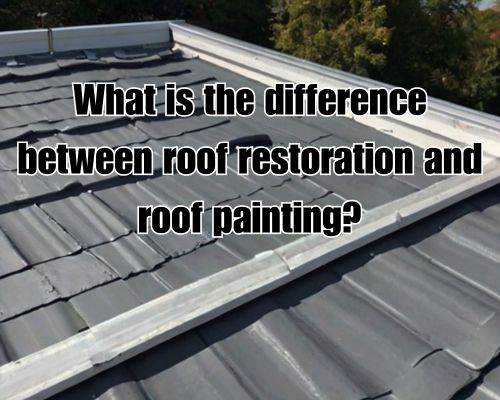If you’re a homeowner in West Palm Beach, Florida, understanding what a roof consists of isn’t just about satisfying curiosity—it’s a crucial step in maintaining your home’s structural integrity and energy efficiency. Florida’s unique climate, with its intense sun, torrential rain, and hurricane risks, demands roofs that can endure and protect. Whether you’re planning a roof replacement, repair, or simply want to make informed maintenance decisions, knowing the components of a roof can save you time, money, and stress.

In this guide, we break down the layers and materials that form a modern residential roofing system, with special attention to how these elements perform in West Palm Beach’s coastal subtropical environment.
1. Roof Decking: The Foundation Layer
At the core of every roofing system is the roof decking, sometimes called the sheathing. It’s typically made of plywood or oriented strand board (OSB) and provides the structural base for all other components.
Local Insight:
In West Palm Beach homes, especially older ones in areas like El Cid and Flamingo Park, decking must be inspected for moisture damage due to high humidity and seasonal storms. If you’re re-roofing, local roofing contractors often recommend replacing or reinforcing existing decking to meet Florida Building Code (FBC) standards.
2. Underlayment: Moisture Barrier Protection
Directly atop the decking lies the underlayment—a waterproof or water-resistant barrier. This layer shields the decking from rain and acts as a secondary defense against leaks.
Types Commonly Used:
- Felt underlayment: Traditional, but less durable.
- Synthetic underlayment: Lightweight, tear-resistant, and preferred in hurricane-prone regions like Palm Beach County.
3. Roof Flashing: Leak Prevention
Flashing is typically made from galvanized steel or aluminum and is installed around vulnerable areas like chimneys, skylights, vents, and valleys.
In coastal cities like West Palm Beach, aluminum flashing is popular because it resists corrosion from salty air. Flashing works in tandem with the underlayment to direct water away from critical seams and joints.
4. Drip Edge: Gutter and Fascia Shielding
Often overlooked, the drip edge is a metal strip installed along the edges of the roof. It directs water away from the fascia and into the gutters, preventing wood rot and water damage.
Drip edges are required by Florida building code and essential in high-moisture areas like West Palm Beach, where daily summer rains can quickly cause roof deterioration without proper drainage.
5. Roofing Material: The Topmost Layer
Now we arrive at the most visible and often most discussed part of any roof—the roof covering. This layer is your home’s first defense against the elements.
Most Popular Roofing Materials in West Palm Beach:
Asphalt Shingles
- Affordable and versatile.
- Available in architectural and 3-tab styles.
Tile Roofs
- Concrete or clay tiles are a staple in Mediterranean-style homes across West Palm Beach.
- Extremely durable in high heat and wind.
Metal Roofing
- Lightweight, reflective, and long-lasting.
- Performs well in storm-prone areas due to its wind resistance.
- Increasingly used in new construction near downtown West Palm Beach.
Whichever material you choose, make sure it’s rated for High-Velocity Hurricane Zones (HVHZ)—a requirement for Palm Beach County roofing compliance. See https://starroofingcontractors.com/ for more.
6. Roof Ventilation: Airflow Matters
Proper roof ventilation helps regulate attic temperature and moisture levels. Without it, you risk mold growth, ice dams (in colder regions), and premature material deterioration.
In West Palm Beach:
Roof vents—whether ridge vents, gable vents, or soffit vents—help reduce indoor heat during the sweltering summer months. A well-ventilated attic also prolongs the life of your HVAC system.
Local roofers often combine ridge vents with solar-powered fans to boost energy efficiency in eco-conscious neighborhoods like Southend and SoSo.
7. Insulation: The Hidden Hero
Although not technically part of the roof itself, attic insulation plays a pivotal role in overall roof performance. Proper insulation helps:
- Maintain indoor comfort.
- Reduce energy bills.
- Prevent moisture buildup.
West Palm Beach Tip:
Opt for spray foam insulation or radiant barriers to combat Florida’s heat. Many local energy-efficiency programs even offer rebates for upgraded attic insulation.
8. Fasteners, Nails, and Sealants: The Little Details
These small but essential components hold the entire system together. From galvanized roofing nails to weatherproof sealants, these materials ensure your roof’s long-term performance.
Note on Local Code:
Due to hurricane threats, West Palm Beach roofers are required to use specialized fasteners that meet uplift resistance criteria. When hiring a contractor, always confirm they follow Miami-Dade or FBC standards.
Local Factors That Influence Roofing Systems
Beyond the core components, several location-specific factors in West Palm Beach affect roofing design and installation:
- Hurricane preparedness: Roofing systems must be impact-rated and able to withstand Category 4 hurricane winds.
- Salt exposure: Proximity to the Atlantic Ocean leads to faster corrosion of metal components unless treated or naturally resistant.
- Humidity and mold: Material choices must mitigate moisture retention to avoid algae growth and interior leaks.
Choosing the Right Roofing Contractor in West Palm Beach
When investing in a roof, it’s critical to partner with a licensed, experienced contractor who understands local regulations, permitting processes, and weather-specific challenges.
Look for:
- Roofing companies with Palm Beach County licensing, see https://starroofingcontractors.com/.
- Reviews from neighborhoods like Northwood Shores, Lake Worth, and Palm Beach Gardens.
- Warranties that include both materials and labor.
Final Thoughts: Roof Anatomy Isn’t Just Technical—It’s Strategic
So, what does a roof consist of? More than just shingles or tiles. It’s a complex, multi-layered system designed to protect your home from West Palm Beach’s tropical elements. From the decking up to the flashing and beyond, every component has a role to play.
Understanding these layers helps homeowners make informed choices—whether you’re scheduling maintenance, planning an upgrade, or comparing estimates.
With the right materials and a skilled contractor familiar with Florida-specific building codes, your roofing system will do more than just sit atop your home—it’ll serve as a fortress against the forces of nature.
Need a new roof or inspection in West Palm Beach?
Ensure your next roofing project is done right—from deck to drip edge. Consult with a licensed local roofing expert to assess your current system and explore upgrade options tailored to Florida’s climate.
